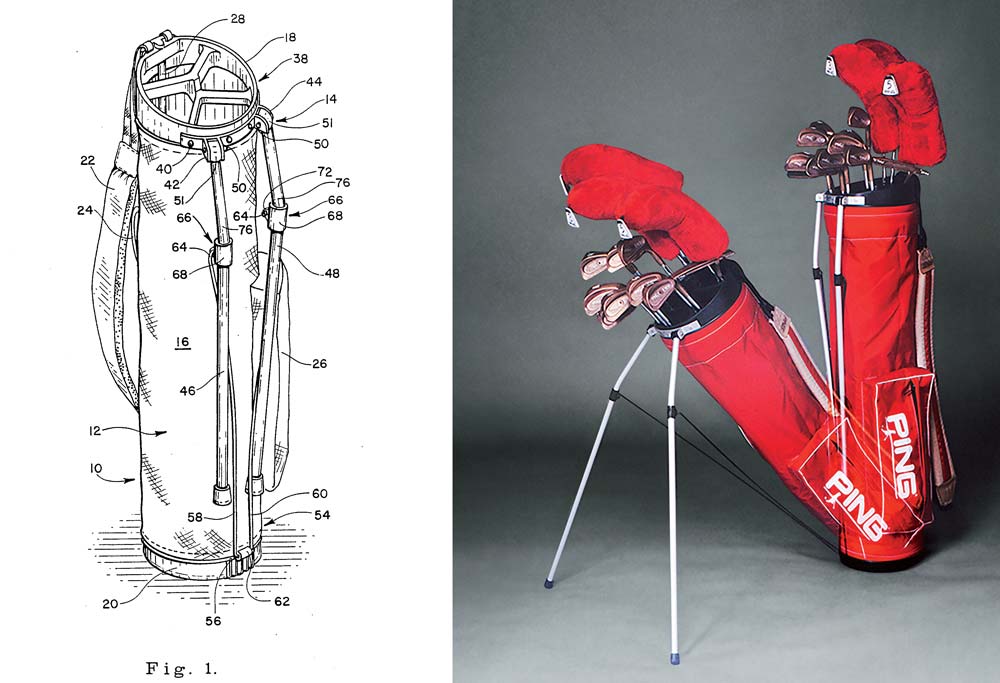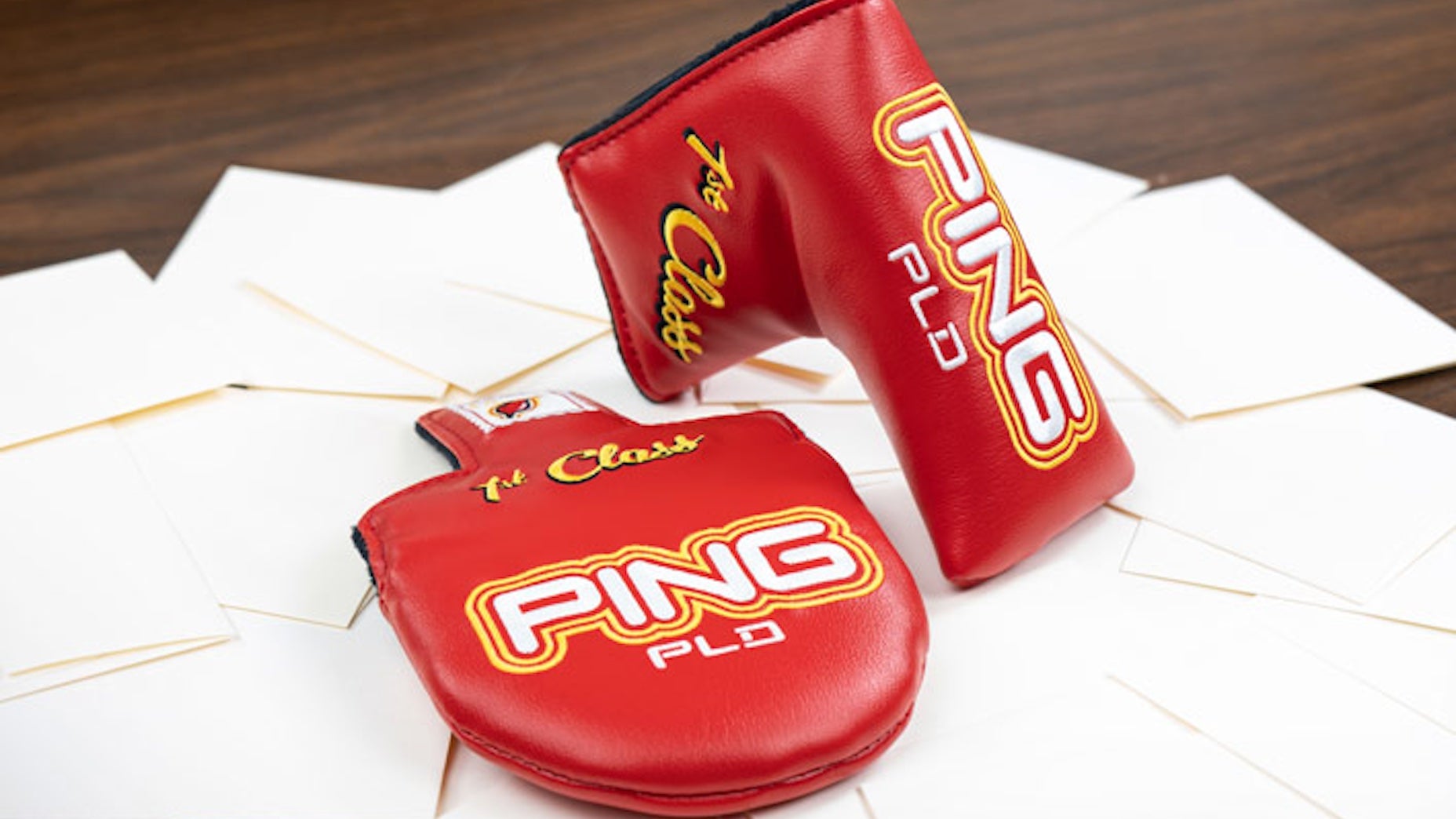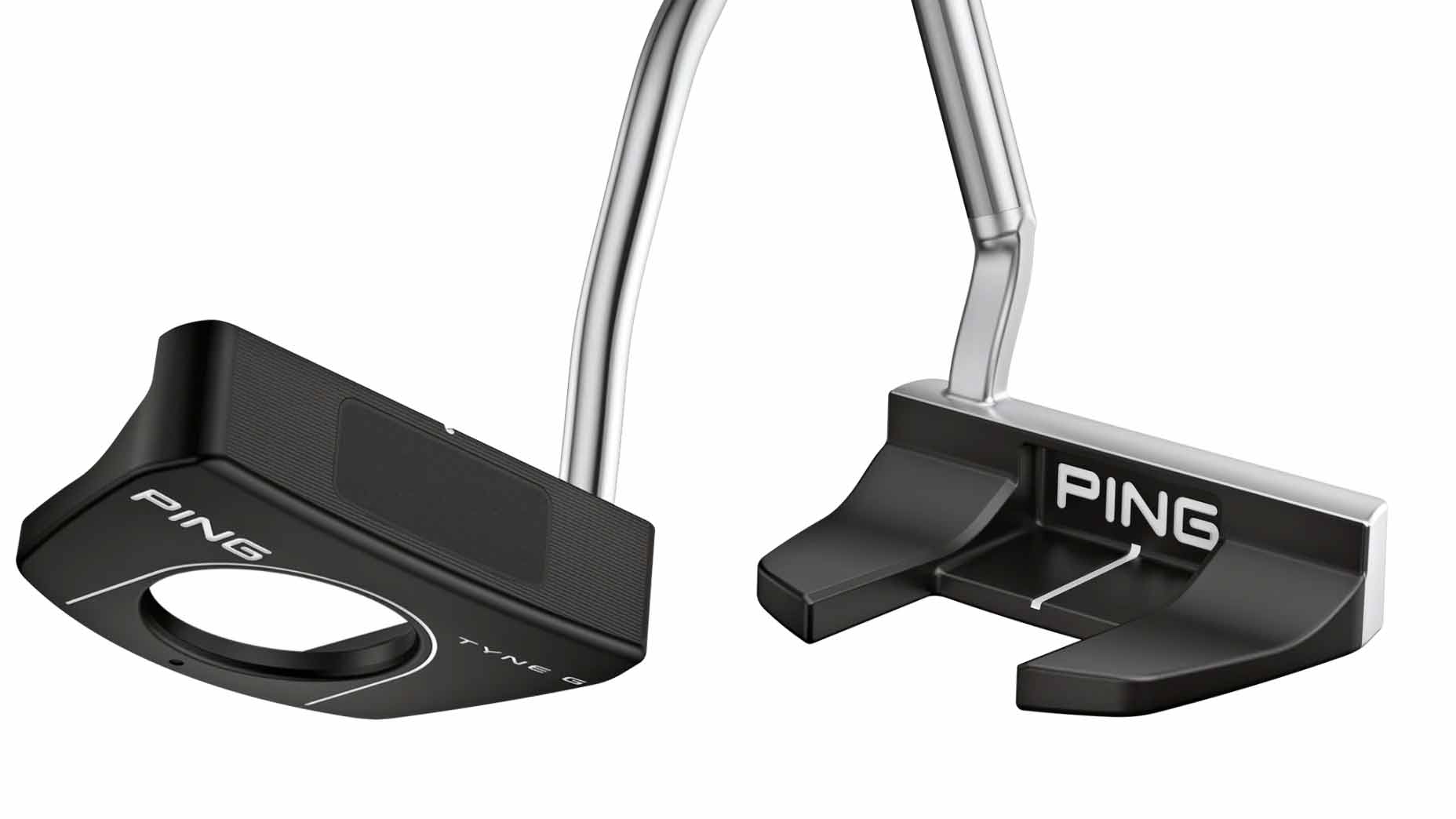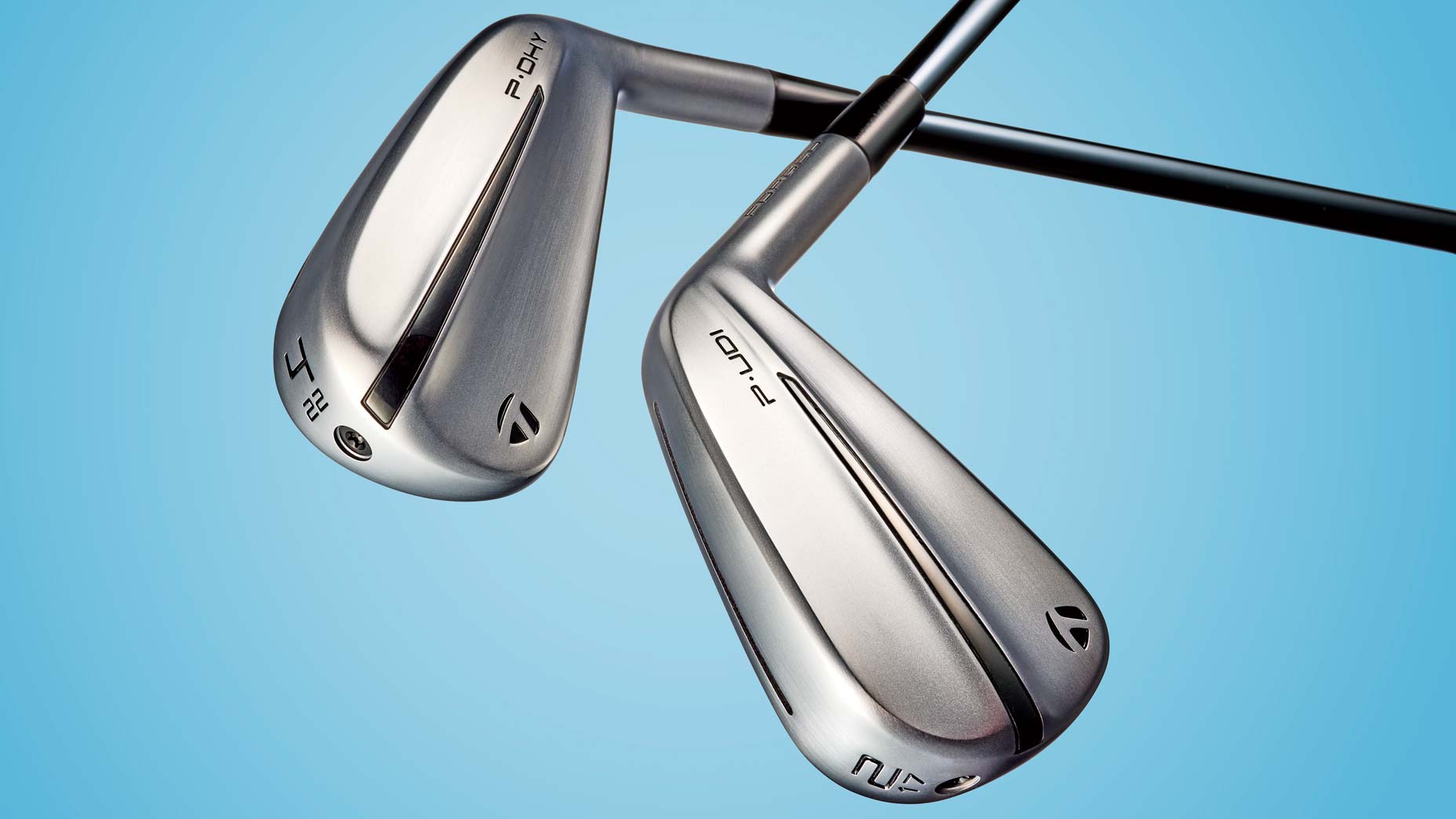Ping’s pioneering Hoofer stand bag has kept golfers upright for 3 decades

The iconic Ping Hoofer stand bag was first released in the mid-1990s.
Jeffrey Westbrook
Karsten Manufacturing Company, aka Ping, didn’t invent the stand bag. That honor goes to an innovative Brit back in the 1890s. But the resulting carriers were Frankenstein-like: clunky strap-on stands made of monstrously heavy steel bolted to no less hefty bags—at least until the coupling came loose. Almost a century later, the stand bag’s fan base remained mostly old codgers.
Then, in the late 1980s, Ping’s John A. Solheim decided to tackle the category. Working with Greg Schmidt, his “go-figure-things-out guy,” Solheim came up with a breakthrough design that gave the concept not just literal but also metaphorical legs. Poundage dropped and function flourished thanks to lightweight aluminum legs and an elegant, pared-down mechanism.
“You could literally drop the bag from a height of four feet and when the bottom of the bag hit the ground, the legs would automatically open and catch the bag,” said Schmidt. You could then lift the bag an inch off the ground and the legs would fold faster than a busted flush draw.
PING 2023 Hoofer Stand Bag
$275
View Product
In retrospect, the notion of having to convince someone of the merits of a lightweight carry bag that stands on its own would, you’d think, be ridiculous. Not so: Golfers can be stick-in-themuds too. Solheim knew the potential core audience was younger players. What he didn’t know was how to get them onboard. He settled on a tried-and-true tactic, namely, reaching out to Oklahoma State University.
Back in 1976, Ping had made OSU the first school it sponsored with equipment. Two years later, the Cowboys’ David Edwards won the NCAA individual championship with Ping Eye clubs (and, yes, a Ping golf ball—times change). Soon, everyone on the team played Pings, and dozens of other programs hopped aboard the train.

Solheim asked company tour rep Gary Hart to contact OSU head coach Mike Holder, who reluctantly agreed to bring the bags along on a two-tournament Hawaiian swing. (“Gary… come on,” were Holder’s exact words.) OSU players were initially just as unenthused. None wanted to carry an “old man’s bag,” in Solheim’s recollection. One outlier finally slung the thing over his shoulder before the final round of the first event.
And then it rained.
Sure enough, his clubs were still dry at round’s end, and his teammates’ clubs weren’t. The next tournament, at Holder’s bidding, the entire team used the stand bags. It soon dawned on the squad that, lo and behold, not having to constantly bend to the ground was another big plus. Though the term “stand bag” hadn’t yet come into vogue, OSU, as the nation’s No. 1 team, again proved quite the influencer—other college teams soon followed in its wake. Stand-bag use trickled down and sales went up and up.
But there was a catch: Specifically, clubs would sometimes get caught up or blocked by folded-in material at the bottom as the bag moved through its paces.
Solheim’s solution was to make the bottom and top oval instead of round, which reduced the material getting caught below and expanded the opening above. The base looked to Solheim like a hoof. Hoof, hoofing it, looper… Behold: the Hoofer, introduced in the mid-1990s.
PING 2023 Hoofer Lite Stand Bag
$245
View Product
The Hoofer (weighing 5.5 lbs; $275) has been continually tweaked since. New materials have helped further lighten its load. Straps have been doubled. The rain hood now gets its own pouch and attaches to the bag itself, like a modern gas cap to the fuel tank. Appropriately, it’s been the No. 1 stand bag at the men’s and women’s NCAA Division I Championships for the past 30 years.
It has also produced several offspring.
There’s the Hoofer Lite (5 lbs; $245); Craz-E Lite (3.25 lbs; $290, proof that losing weight costs money); 14 (for the number of club dividers; $280); water-repellent Monsoon ($330); sturdy Tour (also $330); and the ZIP (customized team bag program). As things stand, one thing seems certain: The Hoofer will be standing long after we’re gone.
“It’s, by far, the best thing I did in my career,” Solheim says of his bag foray.
“I saved a lot of backs.”












